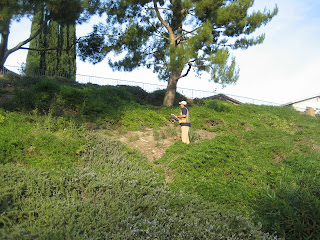This is the first clone of Magnolia grandiflora selected and named within the U.S.
Description- Bushy compact form, growing to an eventual height of 20'. This Magnolia is faster growing than the the 'Little Gem' and has the traditional white flowers that help identify Magnolias.
Platanus X Acerifolia 'Columbia'- London Plane Tree
This tree has character. Exfoliating bark in shades of greys and greens. These large tough shade trees were hybridized and selected for their resistance to the fungal disease Sycamore anthracnose. This tree does well in demanding sites. This tree will reach maturity around 50 tall in 25 years. Great replacement for California Sycamore which prefers plenty of water.
Lagerstromia Indica- Crape Myrtle
Originally from Asia, this tree has been naturalized through the U.S. First introduced in the eighteenth century, this tree is not cultivated throughout the world. This tree has become popular in Southern Ca. due to the beautiful blooms and manageable height (approx. 25'). Crapes can grow larger based on conditions and maintenance practices.
Quercas Ilex- Holly Oak
The tree can also be referred to as the holm oak or evergreen oak. Native to Mediterranean Europe and Africa. This tree can live for well over 100 years and grow up to 65 feet tall. This oak grows almost 24" a year.
Rhus Lancea- African Sumac
Originally from Africa this small to medium sized evergreen tree will grow up to 24' tall and equally wide. Dark gray or brown leaves with course bark give this tree a beautiful look. This tree requires very little water once established. The Sumac is a good alternative to the Brazilian Pepper.









